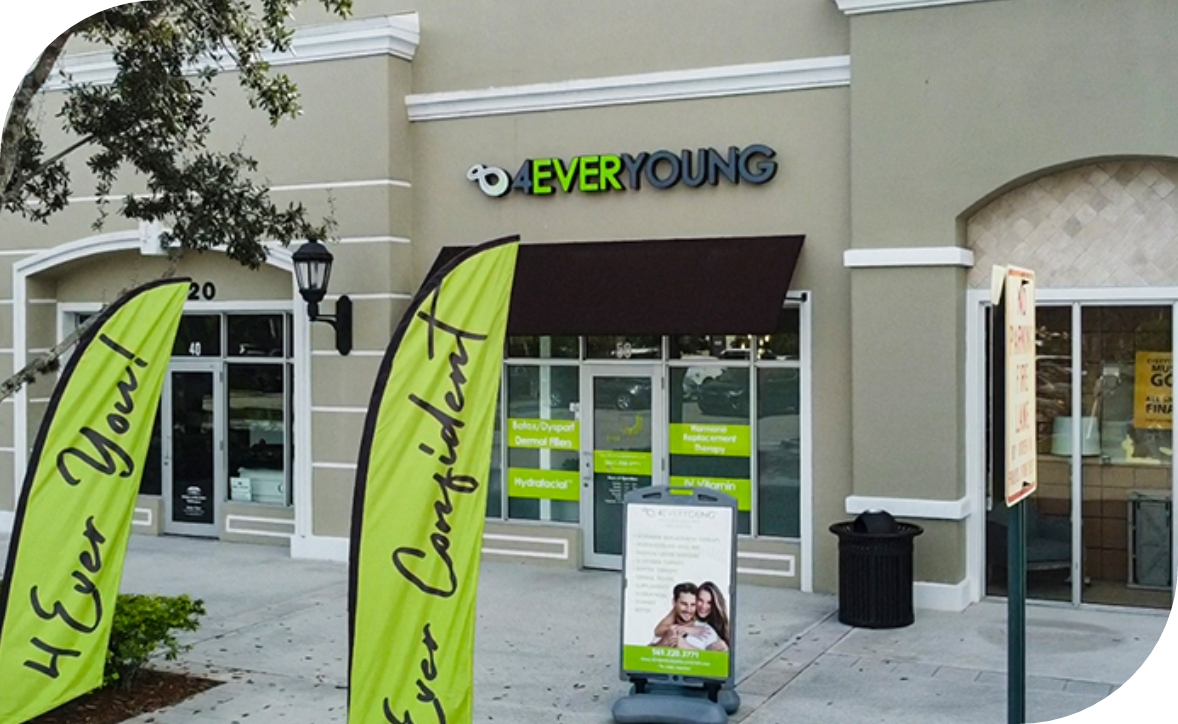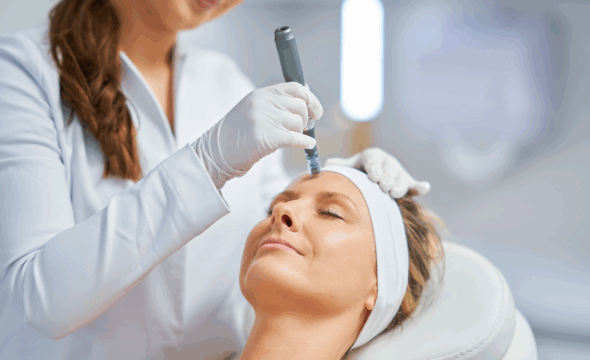Microneedling for Acne Scars: How It Helps and What to Expect
When it comes to improving skin texture and minimizing the appearance of old blemishes, many people turn to microneedling for scars. This minimally invasive treatment uses fine needles to create tiny injuries in the skin, prompting it to repair itself naturally. It offers a gentler approach with effective results. People appreciate that it doesn’t require significant downtime, yet it still encourages smoother and firmer skin. As more individuals seek solutions that are both affordable and effective, microneedling stands out as a favored option. It works well across various skin types, making it accessible to a wide range of individuals.
How Microneedling Works for Scar Remodeling
Creating Microchannels
Microneedling creates a pattern of precise, microscopic punctures in the upper layers of the skin. These microchannels activate fibroblast cells, which are responsible for repairing tissue and generating new collagen. Once these cells are triggered, they begin forming fresh support structures in the skin’s lower layers. This process strengthens the skin from within, gradually reducing scar visibility. The stimulation transforms the skin’s foundational structure. Each session builds on the last, improving resilience and softness. Areas that were once marked by damage become noticeably smoother. This biological repair process is what makes acne scar microneedling powerful.
Collagen and Elastin Production
Once the needling begins, your body sees it as a sign to repair. That means collagen and elastin start to increase in response. These proteins are responsible for giving skin its firmness and elasticity. Scarred tissue begins to change, becoming more even in texture. The extra collagen fills in indentations, while elastin enhances flexibility and structure. This combined action not only reduces the appearance of acne scars but also improves skin tone. The result is a more youthful surface. This is why many consider microneedling scar treatment to be a reliable method for long-term improvements.
Types of Acne Scars
Each type of acne scar has distinct characteristics that respond differently to treatment, and understanding these variations can help set an effective treatment plan. Below are common acne scar types:
- Ice Pick Scars: Characterized by their narrow, deep, and sharply defined appearance, these scars resemble small punctures or deep pores that penetrate the dermis. Because of their depth, they can be challenging to treat with topical products alone. As the tiny needles create controlled micro-injuries, the body responds by producing new collagen and elastin, which help to fill in the depth of the scar over time. While results are gradual and multiple sessions are often needed, patients typically notice softening of sharp edges and a slight elevation of the depressions. Combining microneedling with other treatments like PRP or chemical peels may further enhance outcomes.
- Boxcar Scars: Boxcar scars are broader than ice pick scars and have more defined edges, typically forming oval or round indentations with steep sides. These often result from inflammatory acne and tend to be more visible in areas where the skin is relatively thick, such as the cheeks or temples. Microneedling helps improve boxcar scars by breaking up the fibrous tissue that tethers the skin down, allowing it to lie flat. The controlled injury stimulates collagen synthesis, which helps rebuild the dermal matrix and gradually lifts the depressed areas. This process smooths the transition between scarred and healthy skin, softening the overall appearance of the scars. Depending on severity, a series of sessions spaced four to six weeks apart is typically recommended to achieve meaningful results.
- Rolling Scars: These scars can make the skin look uneven or aged, especially under certain lighting conditions. Microneedling addresses rolling scars by disrupting these fibrous bands and stimulating the regeneration of new, healthier skin tissue. As the skin begins to rebuild itself, the texture becomes more even and the depth of the undulations diminishes. One of the key benefits is its ability to gradually soften the skin’s surface while encouraging a more supple and elastic dermal layer underneath. Needling to remove scars may be paired with subcision, which is a minor surgical technique to release the fibrous bands, for more dramatic results.
- Post-Inflammatory Hyperpigmentation: Although post-inflammatory hyperpigmentation (PIH) is technically not a scar, it often follows moderate to severe acne breakouts and can linger for months, giving the appearance of uneven tone. These flat, discolored spots are caused by melanin overproduction in response to inflammation. Microneedling is a useful treatment for PIH because it accelerates skin cell turnover and helps fade discoloration by encouraging new skin to surface. The microchannels created during treatment also enhance the absorption of topical brightening agents, such as vitamin C, niacinamide, or licorice extract, amplifying their effectiveness.
- Hypertrophic Scars: Hypertrophic scars differ from other acne scars in that they are raised, dense, and often localized to the site of inflammation. These occur when the skin produces excessive collagen during the healing process, resulting in an overgrowth of tissue rather than a depression. While scar treatment microneedling is most effective for atrophic (indented) scars, it can still offer benefits for hypertrophic scars when used carefully and in combination with other modalities. The process can help soften the thickened tissue and improve its texture by promoting more organized collagen synthesis.
By addressing the structural and pigment-related aspects of scarring, individuals can reclaim healthier-looking skin over time.
Laser and Chemical Peel Alternatives
Lasers can overheat the skin, especially in deeper tones, while peels may cause excessive dryness or irritation. Microneedling for facial scars, on the other hand, relies on mechanical action, rather than heat or acid, to prompt change. This makes it a safer choice for those with sensitive or darker skin types. Additionally, while lasers and peels often require more extended recovery periods, microneedling usually results in quicker healing. Those seeking a reliable method for acne scar resurfacing often find it a better match for their lifestyle.
The Microneedling Procedure Explained
Pre-Treatment Consultation
Before undergoing any session, it’s important to begin with a thorough consultation. A licensed practitioner will evaluate your skin’s current condition and determine if microneedling for stretch marks is the right approach. During this appointment, your provider may ask about medical history, previous skincare routines, and any active skin issues. This step ensures skin needling for acne is both safe and effective for your unique needs. It also helps set realistic goals. Depending on the severity and type of scarring, a treatment plan may include multiple sessions spaced out over several weeks. A personalized approach ensures optimal results without overexertion on the skin.
Step-by-Step Walkthrough
Understanding the process behind microneedling for keloid scars or acne-related concerns can ease anxiety before your first visit. Here’s what you can expect from start to finish:
- Cleansing the Skin: This stage ensures the removal of surface-level impurities such as oil, sweat, makeup, and environmental pollutants. A clean base is essential to reduce the risk of introducing bacteria into the skin’s microchannels during treatment. The practitioner typically uses a non-irritating cleanser that maintains the integrity of the skin barrier while ensuring a sterile environment. This step also gives the specialist a clearer view of the skin’s condition.
- Applying Numbing Cream: To ensure your comfort throughout the session, a topical numbing agent is applied across the targeted areas. This anesthetic typically requires 20 to 30 minutes to become fully effective, during which you may relax or discuss any last-minute questions with your provider. The numbing cream significantly reduces the sensation of the microneedles, transforming what could be an uncomfortable experience into a more manageable one, often described as a light scratching or tingling. Some clinics may also provide cooling fans or use occlusive wraps to enhance the numbing process.
- Sterile Needle Preparation: Hygiene is paramount in microneedling, especially when dealing with compromised skin barriers. The practitioner attaches a sterile cartridge to the microneedling device. These cartridges contain fine needles designed to create uniform micro-injuries in the skin. The device is calibrated to match your treatment goals and skin thickness, ensuring a tailored approach to each session. Using single-use cartridges eliminates the risk of cross-contamination, which is critical for preventing infections or adverse reactions. This step is usually performed in your presence so you can witness the attention to cleanliness firsthand. Your practitioner may also wear gloves and sanitize the treatment area once more for added precaution. Proper needle prep is a small but essential detail that reflects the professionalism of a well-run practice.
- Needling the Skin: With the numbing cream active and the device prepared, the needling process begins. The microneedling pen or roller is gently passed over the skin in a systematic pattern to ensure full coverage. The practitioner adjusts the needle depth in real-time based on the area being treated, going deeper in scarred or thicker areas and lighter around sensitive zones. The sensation is typically mild to moderate and made tolerable by the numbing cream. Minor pinpoint bleeding may occur, but this is normal and part of the skin’s regenerative process. The goal is to stimulate collagen and elastin production by triggering the body’s natural healing mechanisms.
- Soothing Serum Application: Immediately after the needling phase, your skin will be primed for absorption, making it the ideal time to apply healing serums or hydrating masks. These post-treatment products often contain peptides, antioxidants, hyaluronic acid, or calming botanicals specifically chosen to reduce inflammation. Because the microchannels created during the session remain open, these ingredients can penetrate more deeply than they usually would, thereby enhancing their effectiveness.
- Post-Treatment Instructions: Once the session is complete, your provider will give you personalized aftercare instructions designed to protect your skin and enhance your results. You may also be advised on when to reintroduce active skincare ingredients, typically after several days. A detailed explanation of what to expect helps manage your expectations and gives you the tools to care for your skin confidently.
Each step contributes to both the safety and success of the treatment. Clients can approach their sessions with confidence, knowing they’re investing in a scientifically grounded path to vibrant skin.
What to Expect After Your Microneedling Session
Healing Timeline
Over the next few days, your skin may feel tight or dry as it begins to regenerate from the micro-injuries caused during treatment. By the third or fourth day, any lingering redness fades, and the surface begins to look refreshed. This phase marks the beginning of new collagen forming beneath the skin. The full effects of microneedling healing emerge gradually.
Managing Side Effects
Mild flaking or dryness can occur as the skin begins to shed its outer layer. These effects usually resolve on their own and indicate that your body is performing the necessary repair work. It’s essential not to pick or scratch the skin during this time, as that could interfere with the results. Instead, focus on keeping the area hydrated and clean. Following professional aftercare instructions supports a smooth microneedling recovery process and minimizes the risk of complications.
Seeing Visible Scar Improvement
Visible improvements don’t happen overnight, but they do come with patience and consistency. Most people begin noticing changes in skin smoothness and clarity within two to four weeks of their first session. However, the full results unfold over time, as collagen continues to develop beneath the surface. The more sessions you undergo, the more significant the transformation becomes. The most significant changes typically occur after three or more treatments. Individuals with deep or textured scars may need additional sessions to fully benefit from the effects of facial treatment for acne scars.
Understanding the Role of Cumulative Results
Microneedling works progressively, building results from one session to the next. This ongoing stimulation is essential for long-term success, particularly when addressing older or more pronounced scarring. The accumulation of collagen over time produces healthier-looking skin. As new layers replace the damaged ones, scarring softens and becomes less noticeable. This is why professionals often recommend a series of sessions for optimal impact.
Lifestyle Habits That Support Collagen Remodeling
Healthy daily routines can significantly enhance your skin’s regenerative process following microneedling. Eating a balanced diet rich in antioxidants and vitamins provides the nutrients your body needs to produce collagen effectively. Prioritizing sleep also helps, as the majority of skin regeneration occurs during rest. Avoiding smoking and excessive alcohol consumption can make a noticeable difference in how well your skin responds to treatment. Gentle physical activity promotes circulation and ensures oxygen reaches healing tissues. These lifestyle choices elevate the results of treatments for acne scarring and encourage long-lasting improvements in skin quality.
With guidance from a trained provider, most people can experience improvements in tone and texture. When performed correctly, skin needling for clear skin can become a reliable technique for long-term enhancement, avoiding the need for more aggressive procedures. Trusting the process and committing to care will help you maximize the benefits of this treatment.







